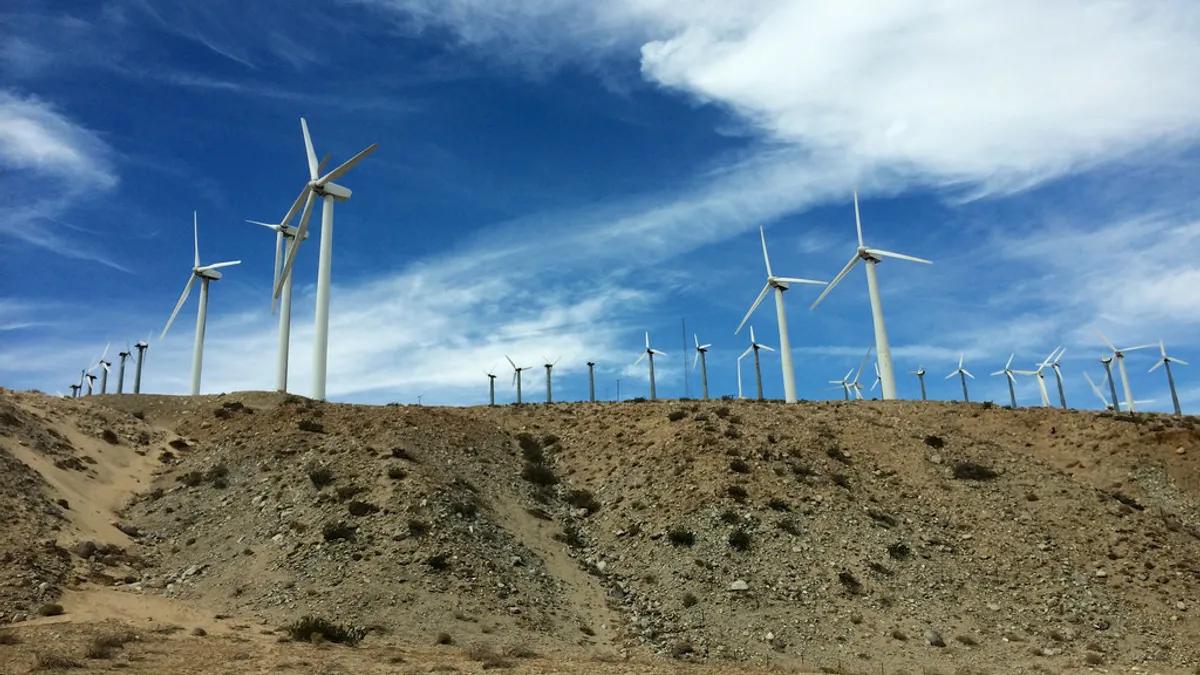Dive Brief:
- Nine Republican lawmakers in Wyoming—seven Representatives and a pair of Senators—have proposed a bill that would stop utilities from using wind power to meet customer demands, likely pressing them to burn more coal instead.
- Inside Climate News reports bill sponsor Rep. David Miller (R) gives the measure only about a 50-50 chance of passing, but he wants to see Wyoming consumers supplied with cheap existing coal energy produced in the state.
- The measure, Senate File 71, requires 95% of utility deliveries be from "eligible resources" in 2018, a list which excludes large-scale wind and solar. By 2019, the requirement would rise to 100%.
Dive Insight:
Instead of a renewable portfolio standard, where Wyoming might require utilities use a certain percentage of clean energy, the state is going the opposite way.
Under the proposed rule, utilities would pay a penalty of $10/MWh for energy not supplied from a list of resources that includes net-metered projects and traditional resources like coal, gas, nuclear, hydro and oil. Conspicuously absent from the list: utility-scale solar and wind projects.
The bill states: "In compliance year 2018, each electric utility shall procure a minimum of ninety-five percent (95%) of its sales of electricity in Wyoming from eligible generating resources." Head over to Inside Climate News, which has more details from bill-sponsor Miller as well as the industry response. So far, utilities aren't sure what to make of the proposal, and environmentalists are horrified.
Wyoming is a major producer of coal—more than 40% of the United States' supplies came from the Powder River Basin in 2015. And according to the U.S. Energy Information Administration, 10 states (including Wyoming) obtain more than 90% of their domestic coal from the state. The decline of the coal industry has hit the resource-heavy state particularly hard, as coal counts as one of its top three revenue sources. The Cowboy state is facing budget shortfalls in the wake of a decline in oil and gas production in addition to coal.
Almost 90% of the state's power generation came from coal in 2015, and the state had the third lowest average retail electricity rates of any state in 2015. While the price of large-scale renewables is declining, existing coal-fired generation remains the cheaper option.
Wyoming has plentiful wind potential, but the state has a complicated relationship with the resource. The state is among just a few to tax wind production - though lawmakers last year rejected a proposal to increase the tax. In 2015, a tax of $1/MWh on wind power generated $3.8 million.















